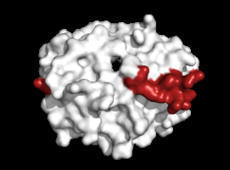Biomarker discovery indicates that sufferers from brain fog and fatigue post-virus could be treated with anticoagulants. Scientists have identified molecular signatures in the blood that are linked to brain fog, other cognitive problems and fatigue in patients who are diagnosed with long Covid after catching the virus. Raised levels of two different proteins were more common in people who developed long Covid symptoms that affected their brains, the researchers found. Both are hallmarks of blood clots in the body, the likely cause of the symptoms reported. The work, described as “an important step forward” by one independent expert, bolsters thinking that emerged at the height of the pandemic that Covid leaves some patients with tiny clots in their lungs, and potentially in their brains, leading to a wide range of long-term memory, concentration and thinking problems. The findings could prove useful if clinical trials such as Stimulate-ICP, which are testing a range of treatments for long Covid, conclude that anticoagulants can improve brain fog and fatigue in some patients. Testing patients’ blood protein levels could alert doctors to those who should be treated for clots early and those who are less at risk.
The researchers looked at blood proteins in more than 1,800 hospitalised Covid patients and found that at the time of infection, those who went on to develop long-lasting cognitive problems were more likely than others to have raised levels of a protein called fibrinogen, or a protein fragment called D-dimer. High levels of fibrinogen are a sign of blood clots in the body. According to Max Taquet, an author on the study at the University of Oxford, patients could have blood clots on the brain that cause cognitive problems, or fibrinogen itself could be affecting the brain. Raised levels of D-dimer also signify blood clots in the body, but patients with high concentrations of the protein also tended to have post-Covid fatigue and breathlessness, leading the researchers to suspect blood clots on the lungs which can reduce blood flow to the brain and also cause fatigue.
“Individuals with elevated D-dimer levels were not only more prone to brain fog but also displayed a heightened risk of respiratory challenges,” Taquet said. Danny Altmann, a professor of immunology at Imperial College London, and a leading long Covid expert, said: “This is an important step forward in our understanding of the stratification of Long Covid and, potentially, some of the underlying mechanisms – they argue the case in support of possible input from effects on clotting pathways.” While a blood test to look for raised levels of the proteins could help doctors flag Covid patients most likely to develop brain fog and other long Covid symptoms, the biomarkers will not spot all patients at risk. “Real care is needed,” said Dr Michael Zandi at UCL’s Queen Square Institute of Neurology. “The associations do not give us yet a clear one-size-fits-all mechanism, and treatments need to pass through rigorous clinical trial first.”
The work, reported in Nature Medicine, comes as health officials in England raised concerns over a new, highly mutated variant of Covid that has been detected in the UK and several other countries. “The UK has entered a period of very lightweight mitigations with a very narrowed booster rollout,” Altmann said. “Large cohort studies remind us what a gamble we face when getting infected by this virus. We accrued more than 700,000 new long Covid cases during the period of ‘mild’ Omicron infections.” Chris Brightling, professor of respiratory medicine at the University of Leicester and a co-author on the latest study, said he feared long Covid patients might not receive the attention they need. “What I’m still disappointed in is that there are still a lot of patients that are suffering who haven’t fully recovered and we don’t know how long it will take for them to recover or whether they will need treatment. “We are now in a situation where Covid is in competition with all the other needs of the healthcare system, meaning there’s a risk patients with long Covid will not have the attention that is required because this is a condition that is still not going away.” Altman added “Most patients feel they have less and less support and negligible access to any treatment options.”
Research published in Nature Medicine (August 31, 2023):



 Your new post is loading...
Your new post is loading...









